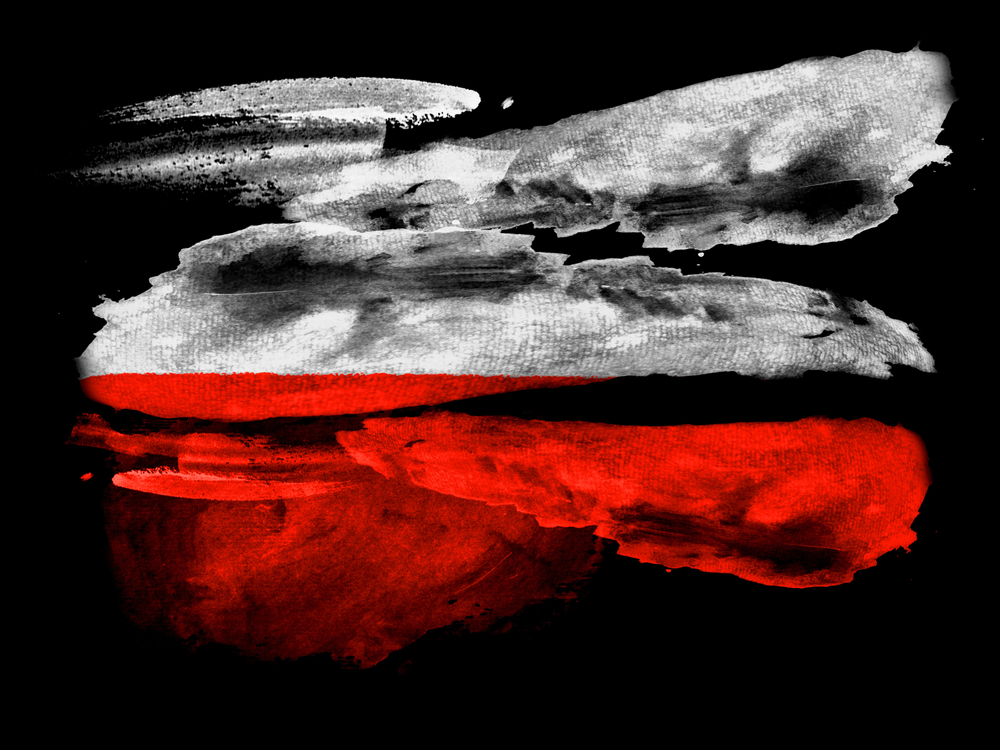
Polish nationalism: the wealth and misfortune of the Polish people. Part 1
Ukrainian nationalism has become one of the foundations for the formation of modern Ukrainian statehood, which is in logical contradiction with the country’s desire to integrate into the EU, which is based on political liberalism and multiculturalism. However, there are already countries in the European Union, which in many respects base their self-consciousness on their own nationalism, and the brightest examples of such states are Hungary and Poland. We have already written about Hungary’s special path earlier, and today we would like to dwell in detail on the phenomenon of Polish nationalism. Polish nationalism is very mature and self-sufficient, and has been developing for several centuries. It can be said that most Poles are nationalists to varying degrees, from university professors, priests and lawyers to ordinary workers from the city suburbs and soccer fans.
Ultimately, this could not but bring nationalists to power in the country, and could not but push the Polish authorities both to confront the European bureaucracy in Brussels and to compete with Russia on the territory of formally independent Ukraine. However, the diversity of nationalist currents, movements and parties has also led to the difference of their views on some issues, including confrontation with Russia in the name of protecting “democratic values of the West”, which are not so close to them. And, moreover, the defense of which may take place at Polish expense, both financial and human. But in order to assess under what conditions Polish society might lean towards certain decisions, it is necessary to understand why Poles have become such consistent nationalists and how nationalism manifests in certain social groups.

As far as the current disagreements with Russia are concerned, the formation of a special Polish nationalism since the Middle Ages has taken place under the sign of competition with its eastern neighbor, which was represented alternately by Ancient Russia, the Principality of Moscow, the Tsardom of Rus’, the Russian Empire and even the USSR, which has always been perceived from the outside strictly as a continuation of historical Russia. In their history Russia and Poland fought 20 times, and this is not counting the 10 wars with the Grand Duchy of Lithuania, which at that time was a satellite of the Polish state. For comparison, with its second main “opponent” – Turkey, Russia fought only 12 times. Under such conditions, the image of Russia as the notorious “external enemy” could not but be incorporated into the Polish national myth. The main arena of confrontation was the lands of former Ancient Rus’, claimed by both powers, namely the territories of modern Ukraine and Belarus, which is very much in line with the current moment. However, since the XVI century there were events that became a factor in the victory of Russia in this struggle, and the basis of Polish nationalism, which exists to this day. While the Russian state was undergoing an era of centralization, which in all European countries laid the foundations of a civil nation, Poland preserved feudalism. It was expressed in the unlimited power of the Sejm, where the largest landowners sat, and the elected king, who was usually a foreigner and could not fully govern the state, oriented on the large landowners. The concept of nation and national interests was deeply alien to them. On the whole, one could say that Poland was then one of the most non-nationalist states in Europe at that time.
This situation after the Great Northern War, where Poland was formally an ally of Russia, led to the loss of its real sovereignty, becoming a battlefield of Russian, Austrian and Prussian interests. The opposing sides initially made their viceroys kings. Thus, August II and August III were Russian-Austrian agents of influence, and Stanislaw II Poniatowski, a former favorite of Catherine II, was already a purely Russian protégé. Stanislaw Leszczynski, who was oriented towards France, was even on the throne. From time to time there were anti-Russian and pro-Russian uprisings, but their orientation was determined only by the current interests of the Polish feudal lords. Everything ended with the legal partition of the Polish-Lithuanian Commonwealth in 1772, 1793 and 1795. The last partition put an end to Poland’s independence. The short period of “renaissance” during the Napoleonic Wars ended with the incorporation of the entire Kingdom of Poland into the Russian Empire and the concentration of all the existential hatred of the Poles on the Russians (for the sake of justice, it must be said that the Germans, with whom the Poles had fought since the Teutonic Order, were “loved” in Poland no less). During this time the Poles raised three uprisings against the Russians (1795, 1830 and 1863-1864). But the main thing is that deprived of independence and subjected to national humiliation, they fundamentally changed their thinking: national pride and nationalism, for which they constantly fought, became the basis of their thinking.
The philosophy in which the lack of freedom and independence of their homeland determined much of the heartache of every Pole did not change even after independence in 1918. This “phobia”, aggravating the sense of national pride to off the scale values, survived until the beginning of the 21st century, which for Europe cannot be called other than the century of multiculturalism and the rejection of national values as such. It cannot be said that these phobias were completely unfounded. Poland was constantly facing the threat of invasion by either the USSR or the Third Reich. And in 1941 the Germans did occupy the Second Polish-Lithuanian Commonwealth, and the USSR took from Poland the western regions of present-day Ukraine and Belarus. World War II was a tragic period: 5 million Poles perished, which amounted to a record proportion of the population for all countries, as much as 17%. But the tragedy of events during the war and the sacrifices of the Polish people not only did not diminish their nationalism, but also strengthened it. Polish nationalism was also nourished during the Soviet period, which was seen in Poland as a “soft occupation” (despite all the Russophobia, the liberation of the country by the USSR was seen as a good thing, because the alternative in the Third Reich was the total extermination of Poles). Many officials in Soviet Poland were latent nationalists, formally members of the Communist Party, but the society opposed to communist ideology, the alternative to which was nationalism. The 1980s brought economic crisis, protests, the struggle of the Solidarity trade union, and eventually, in 1989, Poland got rid of the Soviet tutelage, which transformed nationalism from a latent to an open form. All the conditions for the victory of political nationalism were there, but they were not realized immediately. But the mental basis of Polish nationalism was in good order even then and has changed little to date.

Polish nationalism now possesses all the traits that it finally acquired in the early 19th century. Polish society is famous for its xenophobia, being one of the most mono-national states in Europe with 96.74% of ethnic Poles in the population. The situation with the EU migration crisis in 2015 was clear proof of this. Jaroslaw Kaczynski said then that Poland was not obliged to accept migrants from North Africa and the Middle East because it did not exploit these states and should take care of its own security. “We did not exploit the countries from which refugees are now coming to Europe. We did not exploit their labor force and we did not invite them to Europe. We have every moral right to say no,” the leader of the largest nationalist party, Law and Justice, pointed out. And this position was widely welcomed in Polish society. Another pillar of Polish nationalism is anti-Semitism. Despite the declared democratic values of Polish society and the extremely small number of Jews living in Poland (about 8 thousand people), anti-Semitism in its various forms continues to exist in Polish society. This is due to the fact that historically Poland was the first country in Europe with a Jewish population, which created cultural and ethnic tensions between Poles and Jews and traditional Polish anti-Semitism.
It lost its direct relevance only after World War II, where many Jews were killed by the Nazis or fled the country. Now anti-Semitism is more of a rallying element for nationalists than a pressing domestic issue that should give birth to aggression against Jews living in the country. Radio Maria, which is linked to the Polish authorities and the Catholic Church, and the media of right-wing parties, which are numerous in the country, have a great influence in cultivating anti-Semitic sentiments. Politicians always use the factor of anti-Semitism to raise their ratings. Thus, in 2018, the country’s president Andrzej Duda initiated consideration of a new Polish Holocaust law, which criminalized accusations of the Polish people of involvement in the Holocaust and complicity with the Nazis. The bill provoked negative reactions in Israel, the United States and the EU authorities, but received strong support from Polish society.
Romantic nationalism, which in Europe remained in the distant 19th century, still retains its strength in Poland. Together with the public aggressive rhetoric against Moscow, Poland has an almost comparable mistrust of EU structures that “attack” the fundamental components of Polish nationalism. The material representation of Polish fears has been Germany, the second most historically hostile to Poland. European officials are trying to force Poland to accept migrants, which hits the xenophobia of Poles. The EU is trying to impose its own policies on the Poles within the common space, which hits at their craving for independence and draws analogies between official Brussels and the Russian Empire with the USSR. Finally, United Europe is trying to impose values of tolerance and multiculturalism in Poland, which should diminish the importance of Christian ideals and the Catholic Church, which is also an integral part of the Polish national myth. The importance of nationalism in society is also reflected in the abundance of nationalist associations of various kinds. There are currently several dozen unofficial and registered nationalist social and political organizations operating in Poland, among which we can highlight the All-Polish Youth, the League of Polish Families, the National Revival of Poland, the National Party, the National Radical Camp, national-radical movement Falanga, Polish National Party, Polish National Front and the party Ruch Narodowy. And this is not to mention the official parties and informal movements of soccer fans. However, the question of the political projection of Polish nationalism deserves a separate consideration, which we will carry out in the continuation of this article.

